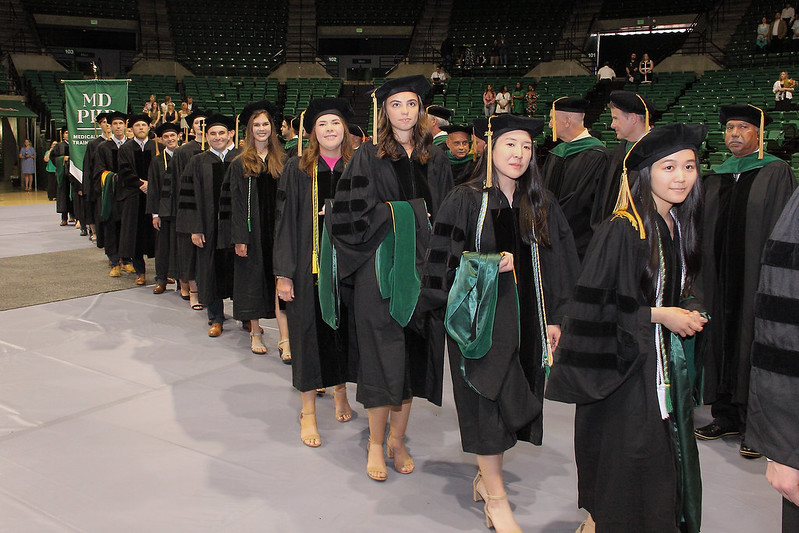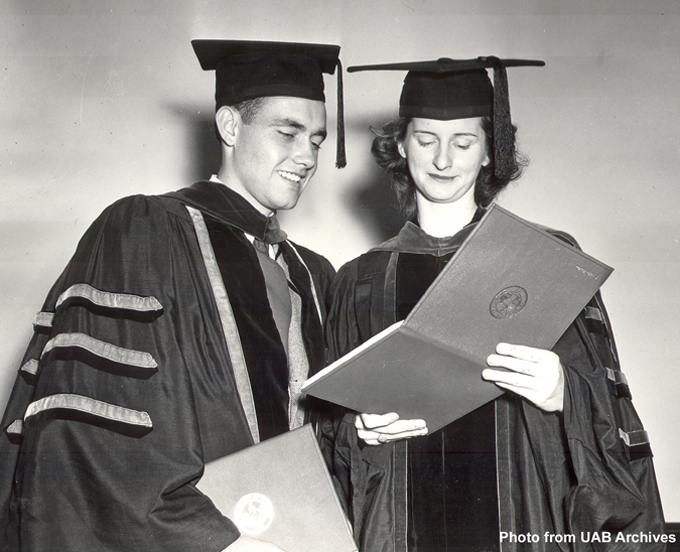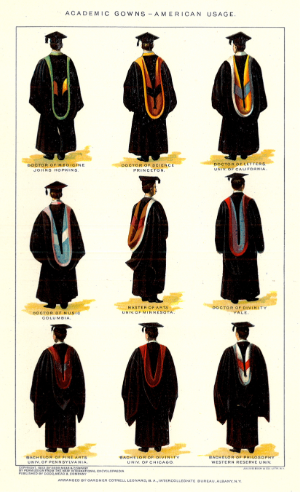 Commencement ceremonies connect today’s graduates to centuries of academic tradition. One of the most recognizable symbols is academic regalia—the cap, gown, and hood. At the UAB Heersink School of Medicine, these garments reflect pride in achievement and a longstanding commitment to academic excellence.
Commencement ceremonies connect today’s graduates to centuries of academic tradition. One of the most recognizable symbols is academic regalia—the cap, gown, and hood. At the UAB Heersink School of Medicine, these garments reflect pride in achievement and a longstanding commitment to academic excellence.
The tradition of academic regalia dates back to the 12th and 13th centuries, when the first universities were founded in Europe—most notably in England, France, and Italy. Scholars at the time wore long, flowing robes and hoods that served both practical and symbolic purposes, offering warmth in cold stone buildings and denoting scholarly rank.
As universities developed, academic dress became more formalized, with specific styles and features marking different levels of education. British universities such as Oxford and Cambridge influenced many of the traditions that American institutions later adopted.
A major step in the evolution of academic attire came in 1895 with the creation of the Intercollegiate Code of Academic Costume in the United States. This standard, which many universities still follow, established the styles for bachelor’s, master’s, and doctoral gowns, as well as the academic hood—each tailored with distinct colors and shapes to indicate a graduate’s degree level and field of study.
Symbolism in every stitch: cap, gown, and hood
Each piece of academic regalia carries a specific meaning. The gown’s design—pointed sleeves for bachelor’s, oblong for master’s, and bell-shaped with velvet panels for doctoral degrees—indicates the level of education achieved. The cap, traditionally a square mortarboard, is worn across all levels, though doctoral graduates often wear a six- or eight-sided velvet tam as a mark of distinction, a tradition that became common in the latter half of the 20th century. While the tradition of the mortarboard is ceremonial today, its use is rooted in practicality, debuting at Oxford University as early as 1600 as a way to hold the corners of the scholar’s bonnet away from their faces.
The academic hood is perhaps the most symbolic piece. The earliest hoods were simply black with no lining, but bachelor’s degree recipients took to adding optional woolen or badger skin lining. Alternatively, recipients of higher degrees—or persons of nobility—adopted silk, sandal, or fur lining. The hood was eventually stopped from being worn by undergraduates, and it became the symbol of higher learning we know today. Today, the hood is lined with the institution’s colors and trimmed in velvet to represent the graduate’s academic discipline. For example, green velvet trim signifies the field of medicine.
UAB’s journey in academic traditions
 UAB’s medical school connection to academic regalia dates back to October 25, 1946, when 21 students graduated from the Medical College of Alabama in Birmingham. Among them were Homer W. Allgood, the first graduate, and Virginia Dare Hamilton, the first woman to earn an M.D. from the medical school. Doctoral graduates wore black gowns with three velvet bars on each sleeve to indicate their degree level, along with the traditional black mortarboard, the standard academic cap for all graduates.
UAB’s medical school connection to academic regalia dates back to October 25, 1946, when 21 students graduated from the Medical College of Alabama in Birmingham. Among them were Homer W. Allgood, the first graduate, and Virginia Dare Hamilton, the first woman to earn an M.D. from the medical school. Doctoral graduates wore black gowns with three velvet bars on each sleeve to indicate their degree level, along with the traditional black mortarboard, the standard academic cap for all graduates.
When UAB became an autonomous university, it awarded its first degrees on June 7, 1970, at the Birmingham Municipal Auditorium (now Boutwell Auditorium). Graduates wore standard academic regalia, including black gowns and traditional caps. As the university grew, commencement ceremonies moved to larger venues, including the Birmingham Jefferson Convention Complex (BJCC), before being held at the UAB Arena (now Bartow Arena) on June 5, 1988—the first time graduation took place on UAB’s campus.
 Image rights by: Intercollegiate Registry of Academic CostumeToday, M.D. graduates continue to wear traditional regalia, including:
Image rights by: Intercollegiate Registry of Academic CostumeToday, M.D. graduates continue to wear traditional regalia, including:
- Black gowns with velvet panels and three sleeve bars
- Green velvet trim denoting the field of medicine
- Six-sided black velvet tams with gold tassels, adopted in 2021
- Hoods lined in UAB green and trimmed with green velvet
Another commencement tradition carried on in the Heersink School of Medicine ceremony is the carrying and display of gonfalons. A flag or banner hung from a wooden crosspiece, it originated in medieval Italy to signify states or offices. In later years, academia has adopted their use to signify colleges or schools within a university. For the Heersink commencement procession, gonfalons are used to identify medical student Learning Communities. Students are assigned to a Learning Community when they enter medical school and stay in the same community all four years of their education. The communities are named for prominent past and present leaders in Heersink School of Medicine, and each name is displayed on a gonfalon.
These garments uphold centuries of academic tradition while also celebrating UAB’s distinctive identity. From its first medical graduates to today’s doctoral candidates, UAB’s regalia represents the university’s legacy of excellence and each graduate’s personal achievement.